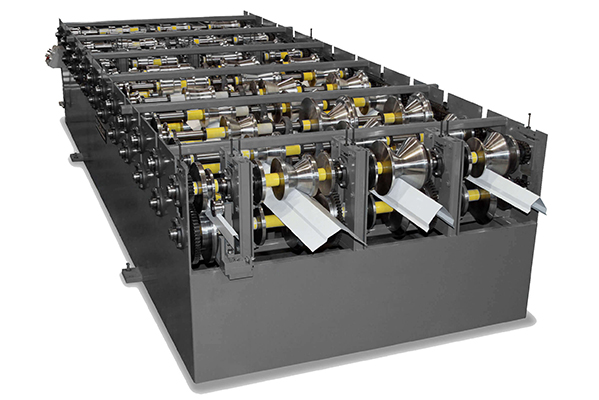Navigation Menu
Contact Us
- Email:
- info@wxavatar.com
- Address:
- Yurong Village, Yuqi Street, Huishan District, Wuxi, China.
Release Date:Jun 03, 2025 Visit:37 Source:Roll Forming Machine Factory
Small-scale manufacturing operations constantly seek tools that can enhance productivity without requiring significant capital investment or workspace modifications. Portable hemmers have emerged as one such solution that may offer efficiency benefits for smaller production environments. This article examines how these compact metalworking tools can potentially contribute to improved workflow in limited-space manufacturing settings.

What Are Portable Hemmers?
Portable hemmers are handheld or benchtop devices designed to create clean, precise hems (folded edges) on sheet metal and other malleable materials. Unlike stationary industrial hemming machines, these smaller versions maintain functionality while offering greater flexibility in placement and operation. Their compact size makes them particularly suitable for workshops with space constraints.
Potential Efficiency Advantages
Reduced Material Handling: By bringing the hemming tool to the workpiece rather than moving materials to a fixed station, portable hemmers may decrease non-productive handling time.
Quick Setup Changes: Many portable models allow for faster adjustments between different hem sizes or material thicknesses compared to larger machines.
Multi-Purpose Workstations: Their small footprint enables integration into existing work areas without dedicating floor space solely to hemming operations.
Lower Energy Consumption: Portable units typically require less power to operate than their industrial counterparts, which may contribute to reduced operational costs.
Operational Considerations
For small manufacturers considering portable hemmers, several factors warrant evaluation:
Material Compatibility: Verify the tool's capacity matches the thickness and type of materials commonly used in production
Production Volume: Assess whether the portable unit's speed meets daily output requirements
Operator Training: Ensure staff receives proper instruction to maximize both safety and efficiency
Maintenance Requirements: Understand the upkeep needs to maintain consistent performance
Quality and Precision Factors
Modern portable hemmers often incorporate features that help maintain consistent quality:
Adjustable depth stops for uniform hem dimensions
Guided bending mechanisms for straight, even folds
Durable construction that minimizes tool deflection during operation
Cost-Benefit Analysis
When evaluating portable hemmers, small manufacturers should consider:
Initial acquisition cost versus potential labor savings
Expected tool lifespan relative to production needs
Compatibility with existing quality control processes
Potential reduction in material waste from improved hemming accuracy

Conclusion
Portable hemmers present an option for small-scale manufacturers looking to enhance their metal forming capabilities without the space or budget requirements of full-size industrial equipment. While not suitable for all production scenarios, these tools may offer measurable efficiency improvements in appropriate applications. Manufacturers should carefully assess their specific operational requirements to determine if portable hemming equipment aligns with their production goals and workflow needs.